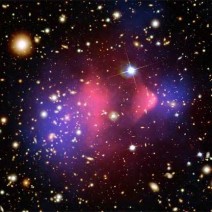Astronomers have just pushed another limit. They have directly measured the distance of a remote galaxy: it is 450 million light-years away from Earth, three times further in the cosmos than the previous record.
The Very Long Baseline Array (VLBA) is a system of ten radio telescopes controlled remotely from the Array Operations Center in Socorro New Mexico USA by the National Radio Astronomy Observatory. The array works together as the world’s largest dedicated, full-time astronomical instrument using the technique of very long baseline interferometry: it provides the greatest ability to see fine detail, called resolving power, of any telescope on Earth or in space.
New measurements with the VLBA have placed a galaxy called NGC 6264 at a distance of 450 million light-years from Earth, with an uncertainty of no more than 9 percent. This is the farthest distance ever directly measured, surpassing a measurement of 160 million light-years to another galaxy in 2009.
Until now, distances beyond the Milky Way have been estimated using indirect methods, sometimes complicated, depending on various assumptions.
Measuring cosmic distances precisely is extremely important, because such measurements are used to estimate the expansion rate of the Universe. More precise data will allow astrophysicists to better constrain the Hubble Constant (the value of the expansion rate), and help solving the dark energy problem (see here). The farther a galaxy is, the faster it is moving away from us; more of the galaxy’s motion is due to the expansion. Thus, the estimates of the Hubble Constant are more reliable with larger distances.
The VLBA is also currently being used to redraw the map of our Galaxy and it has already changed it: it indicated our Galaxy has four spiral arms instead of two, as previously thought. Our Galaxy is also more massive, and rotating faster than previous estimates had indicated.
Mark Reid, of the Harvard-Smithsonian Center for Astrophysics and his team are also observing the Andromeda Galaxy to determine the direction and speed of its movement through space. As our Galaxy and Andromeda should collide in a few billion years, Reid’s team can determine with much greater accuracy if and when that will happen by measuring Andromeda’s motion.
Finally, the VLBA is also used to detect planets possibly orbiting stars smaller than our Sun, at a relatively long distance. This long-term project is studying a total of 30 stars.
Ongoing upgrades in electronics and computing have enhanced the VLBA’s capabilities. With improvements now nearing completion, the VLBA will be as much as 5,000 times more powerful as a scientific tool than the original VLBA of 1993.
